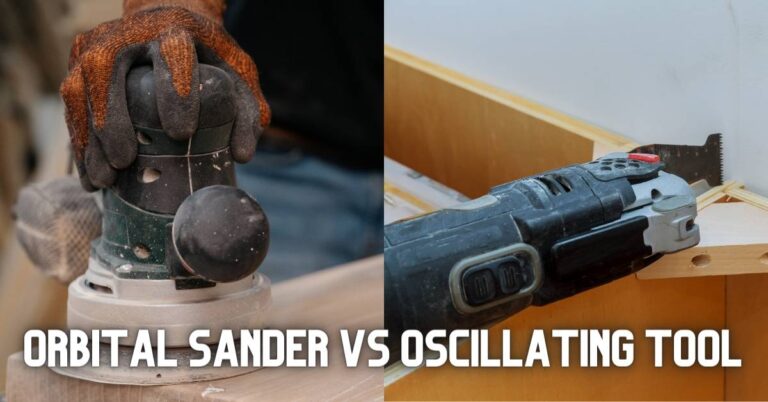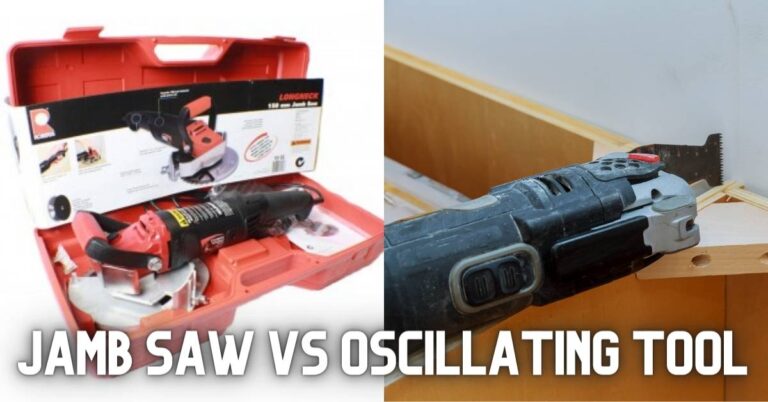Can You Cut Rubber with a Jig Saw: Best Practices and Tips
When it comes to DIY projects and various applications, a jigsaw’s versatility is often questioned. Yes, you can cut rubber with a jigsaw, making it an invaluable tool for hobbyists and professionals. Rubber is a flexible material, and a jigsaw can handle it effectively with the right blade and technique.
Selecting the appropriate blade is essential for those looking to cut rubber for different projects. A fine-toothed blade or one specifically designed for cutting soft materials is ideal. Securing the rubber firmly in place is crucial to ensure a smooth and clean cut, preventing any movement that could lead to uneven edges.
To expand on this further, other tools such as utility knives, scissors, or even a Dremel tool are also options for cutting rubber. Each has its unique benefits based on the rubber’s thickness and type. Understanding the various methods and their applications can help you choose the best approach for your specific needs, ensuring a successful outcome for your project.
Understanding Jigsaws and Their Capability
Jigsaws are versatile power tools that can be used to cut a range of materials, including wood, metal, and rubber. Selecting the right blade and adjusting the settings appropriately are crucial for achieving clean and precise cuts.
Types of Jigsaws and Blades
There are two main types of jigsaws: corded and cordless. Corded jigsaws provide continuous power and are ideal for longer tasks, while cordless jigsaws offer portability and convenience.
Blades come in various types and materials, each designed for specific purposes. High-carbon steel blades are suitable for wood and some plastics. Bi-metal blades combine flexibility and strength, making them perfect for wood and metal. Tungsten carbide blades are the best choice for cutting rigid materials like metal or ceramics.
The number of teeth per inch (TPI) is another critical factor. Lower TPI blades (6-10 TPI) cut faster but leave a rough edge, ideal for wood. A medium TPI blade (10-14 TPI) balances speed and smoothness for cutting rubber.
Adjusting Jigsaw Settings for Optimal Cutting
Adjusting the jigsaw settings is essential to achieving the best results. Orbital settings control the blade’s forward and backward motion. Higher orbital settings (usually 3) cut faster but produce rougher cuts with more tear-out. Lower settings (0) result in cleaner cuts but are slower.
The variable speed trigger allows control over the cutting speed. Slower speeds suit cutting metals and rigid materials, while faster speeds are ideal for wood and softer materials. Adjusting the speed based on the material helps extend the blade’s lifespan and ensure precise cuts.
Clamping the material securely and marking accurate guidelines before cutting reduce vibrations and enhance precision. Always ensure the jigsaw is in good condition and choose the right blade for the material to achieve optimal cutting performance.
Preparation for Cutting Rubber
Cutting rubber, whether mats, stall mats, or thick rubber, requires careful preparation to ensure accuracy and safety. Important steps include selecting the right blade and accurately marking the material before making any cuts.
Selecting the Right Blade
Choosing the appropriate blade is essential for cutting rubber efficiently. A sharp blade explicitly designed for soft materials, such as a fine-toothed blade, works best. Carbide-tipped blades are highly recommended for their durability and precision.
Using the correct blade minimizes the risk of the rubber pinching and grabbing the blade. This also prevents unnecessary wear on the saw. A coarse blade can create unwanted rough edges when dealing with thicker rubber or rubber stall mats, so it is often avoided.
In addition to the saw blade, cooling techniques such as masking tape along the cutting line should be considered to reduce friction and heat buildup. It is also helpful to use clamps to firmly secure the rubber material, ensuring it does not shift during the cutting process.
Marking and Measuring
Accurate marking and measuring are crucial for a clean and precise cut. Use chalk or a fine-tip marker to draw a straight line on the rubber. For best results, employ a straight edge or ruler to maintain the accuracy of these lines.
For thicker rubber materials, measuring both sides and marking them is essential to avoid misalignments. To minimize movement, use clamps to hold the rubber firmly on your work surface.
Additionally, placing masking tape along the cutting line can help achieve cleaner cuts by reducing the likelihood of the rubber tearing. Ensuring all measurements are double-checked before cutting helps achieve the desired outcomes efficiently.
For longer cuts, especially on rubber mats, periodically re-measure to confirm that the line remains straight and true. This preparation step is vital to achieving a professional and accurate finish on rubber-cutting projects.
Cutting Techniques
With the right techniques, cutting rubber with a jig saw can yield clean and precise results. Different approaches help make accurate cuts and handle thicker, more durable materials efficiently.
Making Clean Cuts
Selecting the appropriate blade is crucial for a smooth and clean cut. The best option is a fine-toothed blade designed for cutting rubber.
- Start by securing the rubber firmly using clamps. This prevents any movement, ensuring accuracy.
- Using a straight edge, mark the cutting line clearly on the rubber.
- Begin cutting slowly, allowing the blade to guide itself along the marked line without forcing it.
To avoid inaccuracies, the jig saw blade must remain perpendicular to the material throughout the process. Gradually increasing the speed as you cut can also help maintain precision. For further insight, visit The Habit of Woodworking.
Tips for Thick and Tough Materials
Cutting thicker and tougher rubber materials may require additional steps.
- First, score the rubber with a sharp utility knife. This creates a guide for the jigsaw blade and can help make cleaner cuts.
- Consider warming the rubber slightly with a hairdryer if it is particularly tough. This makes the material more pliable and more accessible to cut.
- Begin cutting with the jig saw at a slow and steady pace. Gradually increase speed to avoid bending the blade, which can lead to inaccurate cuts. A straight edge remains useful here as a guiding tool.
Avoid forcing the blade through the material. This can help prevent damage to both the blade and the rubber. For more detailed techniques, see Christofix.
Safety Measures and Best Practices
When cutting rubber with a jig saw, it is crucial to take specific safety measures to protect yourself and ensure the longevity of your tool. Some essential practices include wearing the proper personal protective equipment (PPE) and maintaining the health of your jigsaw.
Personal Protective Equipment
Wearing appropriate personal protective equipment (PPE) while operating a jig saw is vital. Protective gloves, such as Kevlar-lined options, can help prevent potential lacerations and offer good resistance to cuts and abrasions. Always ensure the gloves fit well without being too tight or loose, as this can impair movement and control.
Safety gear also encompasses safety goggles to shield your eyes from flying debris. Rubber can splinter under certain conditions, making eye protection essential. Consider wearing a dust mask to avoid inhaling particulate matter generated during cutting.
Hearing protection is advisable, especially if you work in an environment with high noise levels. Wearing earplugs or noise-canceling earmuffs can reduce the risk of hearing damage. Finally, non-slip footwear helps maintain stability and balance while operating the jig saw, reducing the risk of accidental falls.
Maintaining Tool Health
Maintaining the health of your jig saw ensures not only the efficiency of the equipment but also your safety. Regularly inspect the blade to ensure it is sharp and free of defects. A dull blade increases the risk of the material pinching, causing kickbacks that could lead to injury.
Cleaning the jig saw after each use is crucial. Residue from rubber cutting can accumulate, affecting the tool’s performance. Use a brush or soapy water for a thorough clean, ensuring no moisture is left in sensitive areas to prevent rust.
Lubricate moving parts periodically to keep the tool running smoothly. Regular lubrication reduces friction and wear, prolonging the jig saw’s life. Always check the power cord for signs of wear and tear to prevent electrical hazards. Replace frayed or damaged cords immediately to maintain safety.
Lastly, the manufacturer’s tool maintenance and operation guidelines must be followed to ensure optimal performance and safety. Manuals often include helpful tips for maintaining specific models, aiding in the prevention of common mechanical problems.
Alternatives to Using a Jigsaw
Several tools can achieve effective results for those seeking alternatives to cutting rubber without a jigsaw. Each tool offers unique advantages depending on the task’s specifics and the user’s preference.
Circular Saw: Though primarily designed for wood and large-scale projects, circular saws can cut rubber with the right blade. They provide straight, clean cuts but require careful handling.
Scroll Saw: Scroll saws are another great option for cutting intricate shapes in rubber. Their fine blades allow for precision, making them suitable for detailed work.
Sawzall: The reciprocating saw, commonly known as a Sawzall, is a robust tool capable of cutting various materials, including rubber. It’s ideal for more substantial or thicker pieces and provides powerful, efficient cuts.
Rotary Cutter: Rotary cutters are efficient tools for smaller or thinner rubber pieces. They offer control and precision, especially for curves and intricate patterns.
Sharp Knife: A high-quality, sharp knife can effectively cut thinner rubber sheets. Utility knives or specialized rubber cutting knives can make detailed and straight cuts, though they may require more effort and control.
These tools vary in complexity, from simple hand tools to more advanced power saws. Utilizing the correct blade and following safety procedures ensures effective and clean cuts across various materials.


